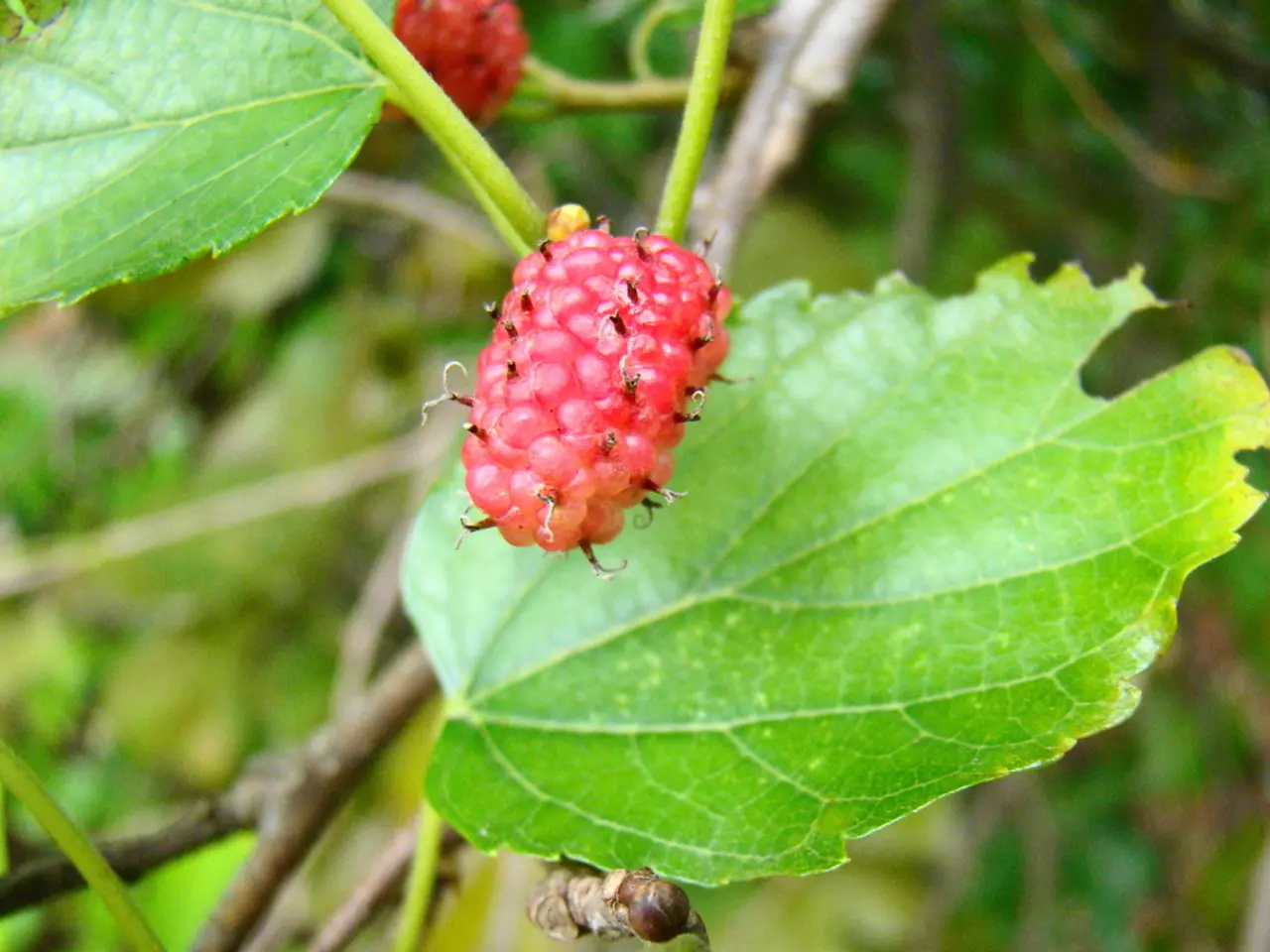Unleashing the Scourge of Red Raspberries Rot
Understanding and Controlling Spur Blight in Red Raspberry Plants
Spur blight, a fungal disease, is a common issue affecting red raspberry plants in the United States. This disease primarily targets the young shoots and spurs of raspberry plants, causing lesions, dieback, and reduced fruit production.
The disease is caused by the fungus Didymella applanata and spreads under favorable wet and humid conditions. Symptoms include purple to brown areas (lesions) on the lower portion of the stem, expanding to cover all the area between two leaves. Infected leaflets may fall off, leaving only petioles without leaf blades attached to the cane.
During wet and rainy periods, spores are released and carried by splashing rain and wind to nearby primocanes. The extent of damage caused by spur blight in the United States is not clearly understood, but it can weaken canes, reduce yield quality, and in severe cases, cause significant economic losses in commercial raspberry production.
Effective control measures for spur blight typically include cultural practices, sanitation, fungicide applications, and planting resistant varieties.
Cultural Practices
Removing infected canes and pruning to improve air circulation and reduce humidity within the canopy helps limit disease development. Weed control within and between rows is also important for improving air circulation within the planting.
Sanitation
Destroying infected plant debris and canes after harvest is essential to reduce sources of inoculum for the following season.
Fungicide Applications
Using appropriate fungicides during the growing season, especially during vulnerable periods such as shoot growth and flowering, can help control spur blight. The choice of fungicide and timing should be based on local extension recommendations to maximize effectiveness and reduce resistance risks.
Resistant Varieties
Planting raspberry varieties with improved resistance to spur blight can reduce disease incidence.
Additional measures include avoiding excessive applications of fertilizer, especially nitrogen, as they promote susceptible succulent plant tissue. Wild brambles, especially wild red raspberries, growing in the area should be removed as they can serve as a reservoir for the disease.
In late summer or early fall, bark in the affected area splits lengthwise, and small black specks (pycnidia) appear in the lesions. The spur blight fungus survives the winter in lesions on diseased canes. Improving air circulation within a planting can help reduce the potential for spur blight infection.
For current spray recommendations, commercial growers can refer to Bulletin 506, Midwest Fruit Pest Management Guide, and backyard growers can refer to Bulletin 780, Controlling Diseases and Insects in Home Fruit Plantings. If you need precise, localized advice, extension services such as those from universities in major raspberry-growing states (e.g., Washington, Oregon, or New York) provide up-to-date recommendations on fungicide choices and resistant cultivars.
This fact sheet was originally published in 2008. Reducing the number and duration of wet periods can help reduce the risk of spur blight infection. The best time to remove old and infected canes is after the canes go dormant in early winter or early spring before new primocanes emerge.
References:
- University of Maine Cooperative Extension. (2008). Spur Blight of Raspberries. [online] Available at: https://extension.umaine.edu/publications/4462e/
- Cornell University Cooperative Extension. (n.d.). Spur Blight. [online] Available at: https://blogs.cornell.edu/berryculture/spur-blight/
- University of Wisconsin-Madison Extension. (n.d.). Raspberry Diseases. [online] Available at: https://hort.extension.wisc.edu/articles/raspberry-diseases/
- Oregon State University Extension Service. (n.d.). Spur Blight. [online] Available at: https://extension.oregonstate.edu/gardening/spur-blight-raspberry-blackberry-disease
The management of spur blight in red raspberry plants incorporates the application of scientific knowledge in pest management, with the use of effective fungicides, cultural practices, sanitation, and planting resistant varieties being key components. Regularly referring to resources such as the Midwest Fruit Pest Management Guide or local extension services can provide guidance on suitable fungicide choices and resistant cultivars. Medical conditions related to this disease may lead to reduced fruit production and potential economic losses in commercial raspberry production, emphasizing the importance of maintaining good plant health and wellness through consistent disease management strategies.




